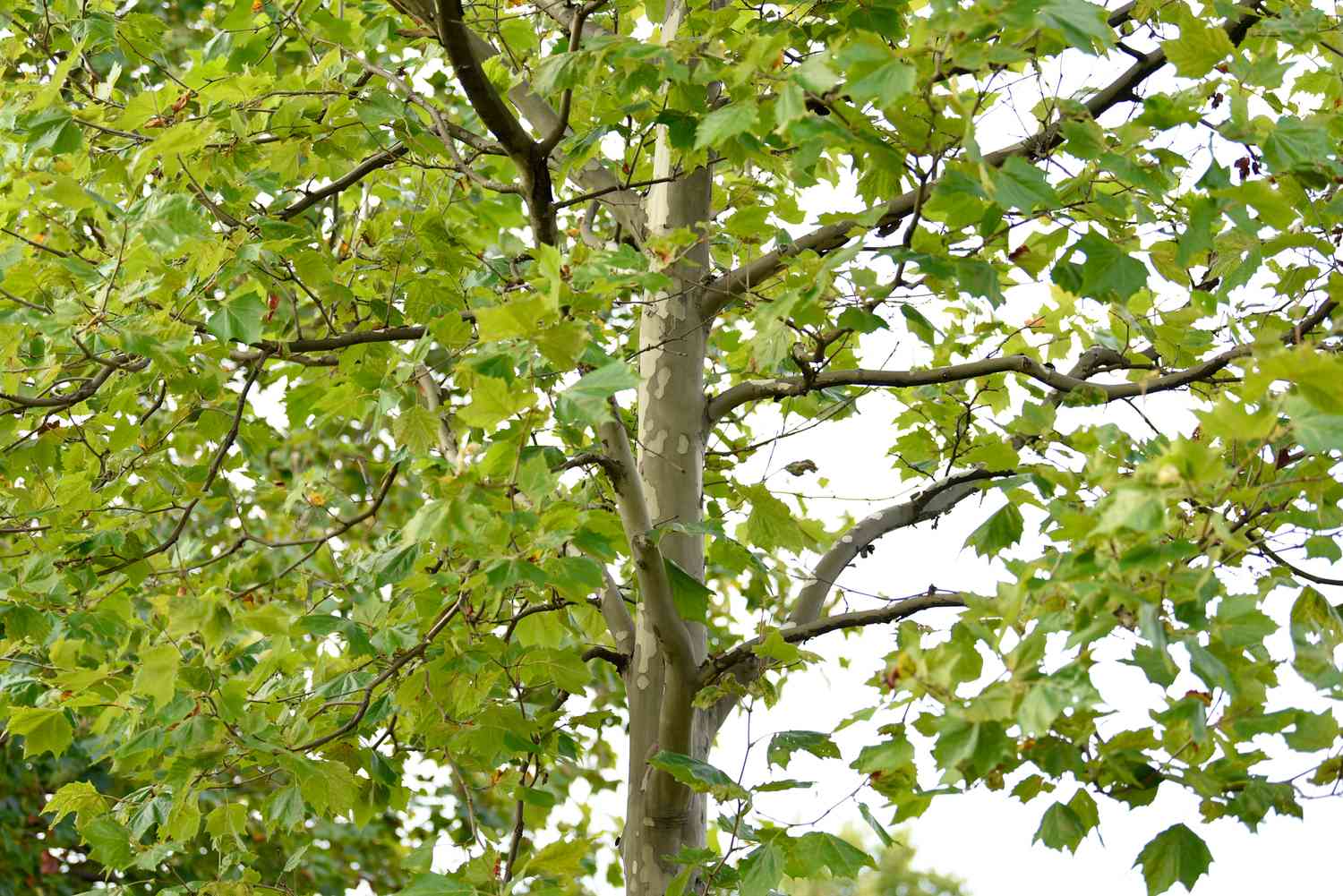
Sycamore trees are majestic and enduring symbols of strength and vitality in the natural world. Their towering presence and distinctive appearance have captured the imagination of people for centuries. From their widespread distribution across various continents to their ecological significance, sycamore trees hold a wealth of fascinating traits and characteristics. In this article, we will delve into 15 captivating facts about sycamore trees, shedding light on their rich history, unique features, and ecological importance. Whether you're a nature enthusiast, a curious learner, or simply drawn to the allure of these iconic trees, this exploration will unveil the remarkable attributes that make sycamores a cherished part of the botanical tapestry. Join us on a journey through the intriguing world of sycamore trees, where ancient wisdom meets modern fascination, and where the roots of knowledge intertwine with the branches of discovery. Let's embark on this enlightening odyssey to uncover the hidden wonders of sycamore trees.
Key Takeaways:
- Sycamore trees are ancient giants that provide habitat, shade, and inspiration. Their unique features and historical significance make them a symbol of strength and resilience in the natural world.
- Sycamore trees, with their majestic size and distinctive bark, play a vital role in supporting diverse ecosystems. They are fast-growing, wind-resistant, and have historical and cultural significance, making them a captivating wonder of nature.
Sycamore Trees are Majestic
Sycamore trees, known for their grandeur and resilience, are a sight to behold in various landscapes. Here are 15 fascinating facts about these majestic trees.
Sycamore Trees Are Ancient
Sycamore trees are among the oldest tree species on Earth, with a history dating back to prehistoric times. These enduring giants have stood the test of time, bearing witness to centuries of environmental changes.
Sycamore Trees Boast Impressive Size
These trees are renowned for their remarkable size, often towering over other species in the forest. With their broad canopies and sturdy trunks, sycamore trees command attention and provide substantial shade and shelter.
Sycamore Trees Have Distinctive Bark
The sycamore tree's bark is a standout feature, characterized by its patchy, exfoliating nature. The peeling bark reveals a mosaic of colors, ranging from creamy white to shades of green, creating a striking visual display.
Sycamore Trees Are Habitat Providers
Sycamore trees play a vital role in supporting diverse ecosystems. Their expansive canopies offer nesting sites for birds, while their fruits and leaves sustain various wildlife, contributing to the overall biodiversity of their surroundings.
Sycamore Trees Are Fast Growers
In the right conditions, sycamore trees exhibit rapid growth, expanding both in height and girth. Their vigorous growth rate enables them to establish a strong presence in their environment within a relatively short time frame.
Sycamore Trees Are Deciduous
As deciduous trees, sycamores undergo striking seasonal transformations. In spring and summer, their lush foliage provides shade and shelter, while autumn sees a spectacular display of vibrant, changing leaves before they shed in preparation for winter.
Sycamore Trees Possess Unique Seeds
The seeds of sycamore trees are encased in spherical, spiky structures known as "buttonballs" or "monkey balls." These distinctive seed pods add visual interest to the tree and are often utilized in decorative crafts and natural art projects.
Sycamore Trees Are Adaptive
Sycamore trees exhibit adaptability to various soil types and moisture levels, thriving in both wet and dry conditions. This resilience allows them to flourish in diverse environments, from riverbanks to upland forests.
Sycamore Trees Have Historical Significance
Throughout history, sycamore trees have held cultural and symbolic significance in many societies. They are often associated with strength, longevity, and renewal, featuring prominently in folklore, literature, and religious texts.
Sycamore Trees Are Prone to Hollowing
As sycamore trees age, they have a tendency to develop hollow trunks, providing habitat for a myriad of wildlife, including birds, mammals, and insects. These hollowed trees serve as natural shelters and contribute to the overall ecological balance.
Sycamore Trees Are Shade Providers
Sycamore trees are revered for their expansive canopies, which offer ample shade during hot summer days. Their cooling shade makes them popular choices for parks, gardens, and urban landscapes, providing respite from the sun's intensity.
Sycamore Trees Are Wind Resistant
Thanks to their robust structure and deep root systems, sycamore trees exhibit excellent wind resistance. This resilience enables them to withstand strong winds and turbulent weather conditions, making them stalwart fixtures in the natural landscape.
Sycamore Trees Are Source of Inspiration
The majestic presence and enduring nature of sycamore trees have inspired artists, poets, and storytellers across cultures. Their striking appearance and symbolic significance have been immortalized in various artistic expressions, celebrating their timeless allure.
Sycamore Trees Are a Symbol of Strength
Sycamore trees symbolize resilience, endurance, and unwavering strength. Their ability to weather storms, stand tall through the ages, and provide sustenance to diverse life forms solidifies their status as emblematic figures in the natural world.
Sycamore trees, with their ancient lineage and profound significance, continue to captivate and inspire all who encounter them. Their towering presence and enduring legacy serve as a testament to the remarkable wonders of the natural world.
Conclusion
Sycamore trees are truly remarkable, with their majestic presence and rich history. From their distinctive bark to their ecological significance, these trees have captured the imagination of people for centuries. By understanding the unique characteristics and benefits of sycamore trees, we can appreciate their vital role in the environment and our lives. Whether it's providing shade on a hot summer day or adding beauty to the landscape, sycamore trees continue to stand as symbols of resilience and natural beauty.
FAQs
Are sycamore trees easy to grow?
Sycamore trees are generally low-maintenance and can thrive in various soil types. However, they require ample space to accommodate their expansive root systems and branches. It's essential to plant them in an area with plenty of sunlight and room to grow.
Do sycamore trees have any cultural significance?
Yes, sycamore trees hold cultural significance in various societies. In ancient mythology and religious texts, they are often associated with strength, protection, and longevity. Additionally, they have been celebrated in art, literature, and folklore, symbolizing resilience and natural beauty.
Sycamore trees are truly remarkable, with their towering presence and rich history. Learning about these majestic giants is just the beginning of your journey into the wonders of nature. Why not explore more fascinating topics, like the unique culture and natural beauty of West Virginia? From its rugged mountains to its vibrant communities, this state has countless stories waiting to be discovered.
Was this page helpful?
Our commitment to delivering trustworthy and engaging content is at the heart of what we do. Each fact on our site is contributed by real users like you, bringing a wealth of diverse insights and information. To ensure the highest standards of accuracy and reliability, our dedicated editors meticulously review each submission. This process guarantees that the facts we share are not only fascinating but also credible. Trust in our commitment to quality and authenticity as you explore and learn with us.


